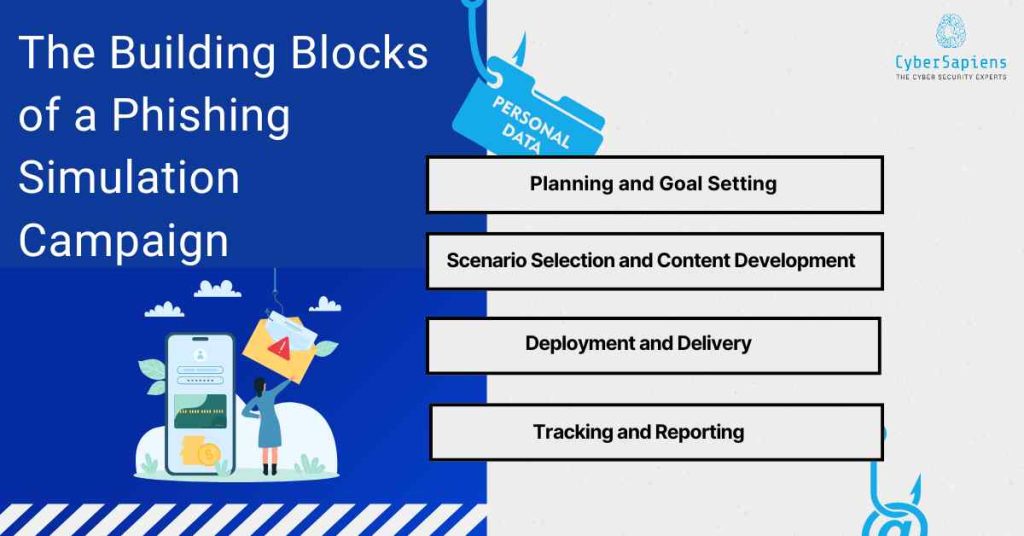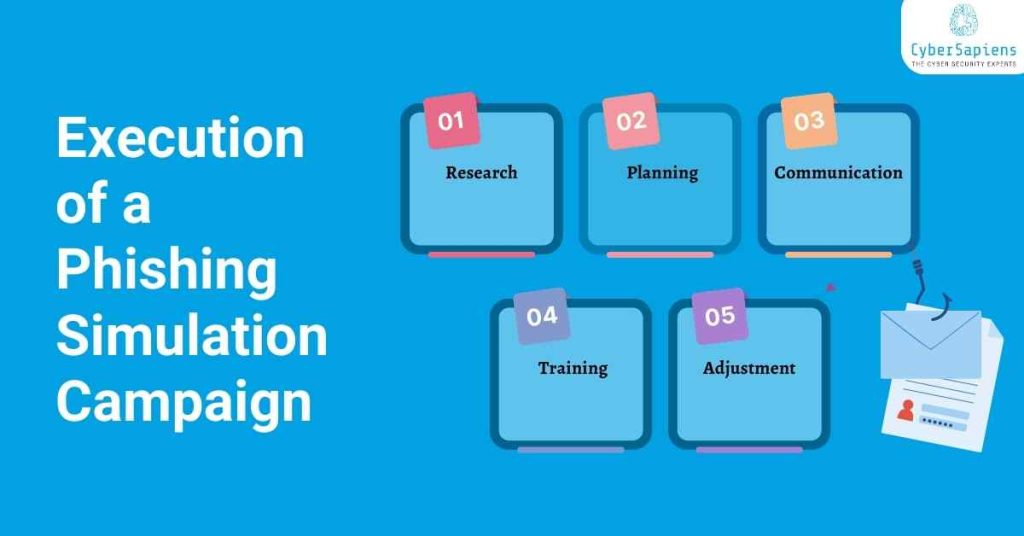Plenty of phishing scams online have become major cyber-security concerns, as messages and emails filled with false information try to trick users into revealing their sensitive details or clicking malicious links. Therefore, to beat this threat, more and more organizations are adopting phishing simulation programs.
These exercises include sending controlled phishing scans to employees that replicate real attacks to analyze their abilities to find and react to these emails in the appropriate way.
On the other hand, the question is, ‘What consists of a well-crafted phishing simulation campaign’? This article will discuss the key elements, uncover the successful practices, and reveal what affects the outcome of campaigns.
This article will mainly focus on what composes a phishing simulation campaign, highlight the effectiveness measures, and disclose what goes under the campaign result.
Understanding Phishing Simulation Campaigns
As a part of the phishing simulation campaign, IT admins will send (simulated/fake) phishing emails to employees as they would be in real-world phishing events by cybercriminals.
The aim is that they will cave in and issue the money therefore the weak links are revealed to spot holes in the training. Such simulators must be as close to reality as they can to give a true assessment of people’s possible practical responses to the probable phishing attempts.
The Building Blocks of a Phishing Simulation Campaign

A well-constructed phishing simulation campaign is not simply sending out a random suspicious email. It’s a strategic process that involves several key elements:
1. Planning and Goal Setting:
The objective setting and the campaign initiation are the first steps we’ll take. Are you questioning whether the main goal of your project is to measure the overall success of the employee training on phishing or not?
Identify high-risk user groups. Or assess the efficiency of the acquired tools or the existing security training program?
Clearly defined goals that ultimately determine what kind of simulations you use and the data to measure will be the basis for the analysis.
2. Scenario Selection and Content Development:
Track goals and the next mechanism comes in with the scenario to be selected. Frequently used simulations include fake password reset requests, time-critical processes that users may regard as an approved source like from an IT Department and visually appealing offers that users consider real company communication.
The development of the content involves writing emails that appear genuine and similar to the actual phishing attempts. This includes elements like:
- Spoofed Sender Addresses: You can never take for granted that the origin of the emails you receive is from trusted sources like known colleagues, managers or famous brands.
- Urgency and Pressure Tactics: Phishing emails often have the effect of hurried decision-making, or careless actions by users, just to surf the link or carry out any stated instruction. Simulations could operate under this principle by simulating responses to uncertain and stressful situations in order to experiment with ways to handle them.
- Suspicious Attachments or Links: Emails that are used by intruders very often include malicious attachments or links that are claimed to be the sources of access to the legitimate site but are actually the ones that JavaScript code, which steals credentials or infects computers with malware embedded in they contain. Simulations can deliver the placeholders instead of their actual code. An infected end user will download the program from the service provider on his or her computer.
- Grammatical Errors and Inconsistencies: Some scams are so obvious that they are betrayed by unintentional typos or grammar errors, or the inconsistency in the way the text is formatted. Through this, employees can be taught to have an eye for these warning signs and grasp what makes them, when combined, unusual and flag them appropriately.

3. Deployment and Delivery:
Thereafter, email content is finalized and the simulated phishing emails are deployed by the campaign to its specific audience. It could encompass such tactics as sending out emails to all the employees or particular user groups determined by specified criteria in advance.
4. Tracking and Reporting:
One of the most important parts of the campaign is to make sure that employees´ feedback is entered in the system.
Sophisticated work environments allow clients and employees to track metrics such as open rates, click-through rates and if they reported being victimised.
Through this data, it becomes obvious the level of employee absorption and what the campaign is able to achieve.
Execution of a Phishing Simulation Campaign

- Research: Study the current phishing environment. What forms of phishing email are tapping your specific sector? Leverage the statistics to build engaging phishing email scans with clear call-to-action features.
- Planning: Make a determination of the range of the exercises and the kind of phishing emails to utilize. This orientation has to be connected with your complete cybersecurity strategy.
- Communication: Make it obvious to staff that you intend to conduct a campaign. They should be able to tell apart the real emails from the phishing emails and should know what to do if they suspect to have just received a phishing email.
- Training: Conduct training for employees who fail the simulation. This operation should even be an ongoing process in order to be in line with the new techniques employed by cybercriminals.
- Adjustment: So as the data reveals, the campaign should be changed, forcing it to deal with the areas where the weaknesses are located and improve the total organization’s security.
Conclusion
In conclusion, a phishing simulation campaign is a system that is multifaceted and will involve careful planning, taking action and then making successive moves.
This enables organizations to closely imitate phishing scams that happen and, as a result, allow their employees to become more experienced in spotting and avoiding these threats.
This will turn out to build the organisation’s cybersecurity. One of the key factors for an efficient simulation is its periodic execution and frequent updates in order to match the latest schemes of cyber attackers.
FAQs: What Composes a Phishing Simulation Campaign
1. What is a phishing simulation campaign?
Ans: A phishing simulation campaign is a controlled exercise that tests an organization’s ability to recognize and respond to simulated phishing attacks, which mimic real-world phishing attempts without malicious intent.
2. Why are phishing simulations important?
Ans: They are crucial for raising awareness among employees about phishing threats, testing the effectiveness of security training, and identifying areas where additional training may be necessary.
3. How often should phishing simulations be conducted?
Ans: The frequency can vary, but it’s generally recommended to conduct simulations regularly, such as quarterly or bi-annually, to keep employees vigilant and up-to-date with the latest phishing tactics.
4. Who should be targeted in a phishing simulation?
Ans: All employees should be included, but special attention may be given to those with access to sensitive information or those in high-risk positions, such as finance or IT departments.
5. What types of phishing emails are used in simulations?
Ans: Simulations use a variety of phishing emails that reflect current trends, such as those impersonating senior executives, fake IT alerts, or fraudulent requests for information.
6. How are phishing simulations created?
Ans: Simulations are created using specialized software that allows security teams to craft realistic phishing emails and track interactions, such as clicks and data entry.
7. What happens if an employee falls for a phishing simulation?
Ans: Typically, they are directed to a landing page that provides immediate feedback and educational tips on recognizing phishing attempts in the future.
8. Can phishing simulations be customized?
Ans: Yes, simulations can be tailored to the specific needs and risks of an organization, including the use of industry-specific language and branding.
9. What metrics are important in phishing simulations?
Ans: Key metrics include click rates, the number of data entries on fake web forms, and how many employees report the simulation as a phishing attempt.
10. How do phishing simulations improve cybersecurity?
Ans: By identifying vulnerabilities in employee behaviour and knowledge, simulations help organizations strengthen their defences against actual phishing attacks.












